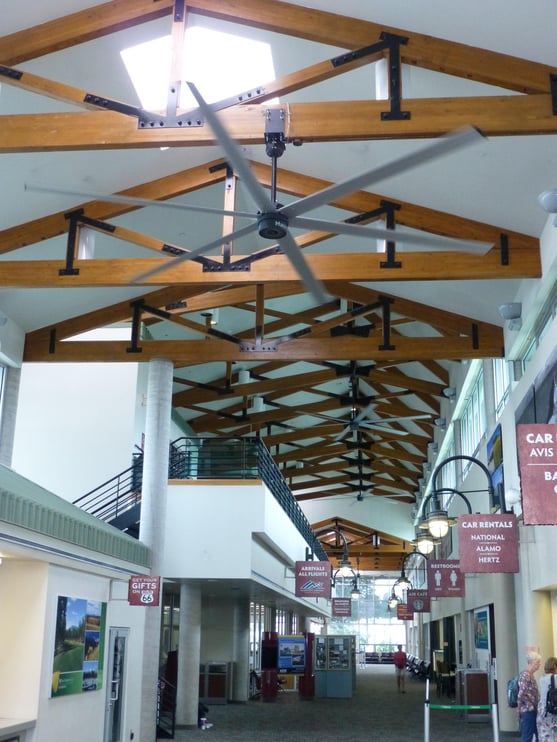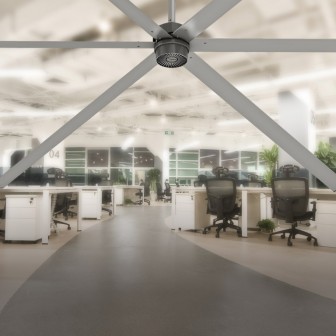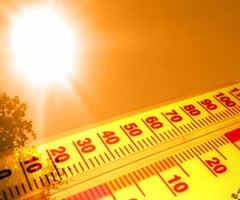If you were challenged with finding a way to cool down an industrial-size space and you had to pick...
Cooling Comparison: HVLS Fans vs. Traditional Fans in the Workplace
Workplaces in every industry have one thing in common. They all need to remain at a comfortable temperature for employees to stay productive. There is some confusion, however, about how best to keep a space cool and comfortable during the hot months of summer. What is the cooling effectiveness comparison: HVLS fans vs. traditional fans?
Scientific research has shown that HVLS fans are much more efficient at keeping a space cool than smaller fans, especially in larger spaces like warehouses, open-plan offices, and lobby areas.

The HVLS Origin: A Traditional Fan Alternative
HVLS fans were invented as an alternative to the small box and pedestal-style fans that most people are familiar with. In the late 1990s, MacroAir founder Walter Boyd created a slow-spinning fan to cool down dairy cows in California that were suffering from heat stress. These early HVLS fans were more effective than traditional fans for several reasons:
- Larger blades generated a bigger column of air that reached more of the space,
- A slow-moving column of air didn't kick up bothersome dust and debris like smaller, faster fans did, and
- HVLS fans did not make a loud buzzing or humming noises that startled the animals like smaller fans.
Boyd took his original design and used it as the basis for MacroAir's industrial HVLS fans. They use bigger, slower-moving columns of air with a wider reach and whisper-quiet operation to effectively move air. Today they are used in warehouses, hangars, restaurants, theaters, and other areas where efficient cooling is needed on a large scale. The same principles that helped keep cows cool are also used to keep people comfortable in all types of environments.
Energy Usage of HVLS Fans

The other major benefit of using HVLS fans instead of smaller, faster fans is energy consumption. Consider the 18-foot version of MacroAir's AirVolution-D, which has a motor that runs at just 1.05 horsepower and turns the fan at a speed of 74 RPM. An average ceiling or tabletop fan spins several times that speed. Not only does this make the fan noisy but it also consumes much more energy.
HVLS fans also use less energy than traditional fans because they work well with air conditioning systems. An HVLS fan can reduce the amount of electricity that your HVAC system uses each month. This will greatly improve your energy efficiency. In fact, some MacroAir customers have been able to reduce their air conditioning tonnage by a full 25%.
The Bottom Line
HVLS fans vs. traditional fans? There seems to be a clear winner here.
Scientific research has shown that a single HVLS fan can create the same cooling effect as ten smaller fans at a much lower cost. The large, slow-moving columns of air created by HVLS fans have a wider reach, create less noise, and operate more efficiently than traditional fans. For more information about why HVLS fans are so much more efficient than regular fans, get in touch with a MacroAir engineer today.

